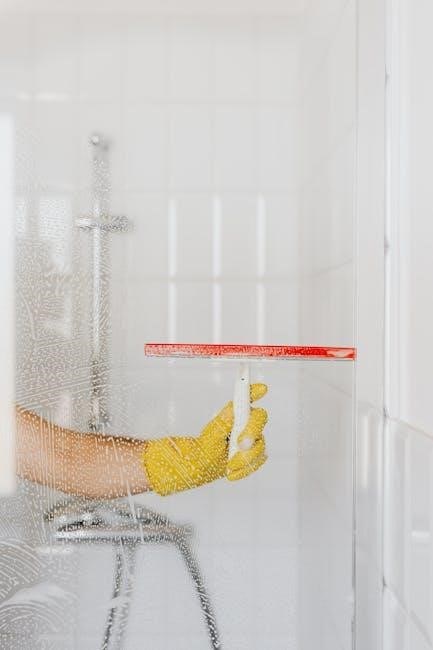TILE is an acronym helping with manual handling risk assessment, considering Task, Individual, Load, and Environment to improve health and safety, reducing workplace accidents and injuries effectively always online.
Definition of TILE
The definition of TILE is an acronym that stands for Task, Individual, Load, and Environment, which are the key factors to consider when assessing manual handling risks.
According to the information available, TILE is a method used to identify and mitigate the risks associated with manual handling, and its definition is closely related to the concept of risk assessment.
The TILE acronym is a widely accepted definition that helps to improve health and safety in the workplace by considering the task, the individual performing the task, the load being handled, and the environment in which the task is being performed.
This definition of TILE is essential in understanding the importance of manual handling risk assessment and how it can be applied in various workplace settings to reduce the risk of accidents and injuries.
By using the TILE definition, employers and employees can work together to create a safer working environment and reduce the risk of manual handling accidents.
The definition of TILE is a crucial component of manual handling risk assessment and is widely used in various industries to improve health and safety standards.

Understanding the TILE Acronym
TILE acronym is understood as a method to assess manual handling risks considering factors to improve health and safety always online effectively.
Breaking Down the TILE Acronym
The TILE acronym can be broken down into four essential components: Task, Individual, Load, and Environment.
Each component plays a crucial role in assessing manual handling risks and improving health and safety in the workplace.
The Task component considers the nature of the manual handling task, including the actions and movements involved.
The Individual component assesses the capabilities and limitations of the person performing the task.
The Load component evaluates the weight, size, and shape of the object being handled.
The Environment component considers the physical surroundings in which the task is being performed, including any potential hazards or obstacles.
By breaking down the TILE acronym into its individual components, organizations can gain a better understanding of the factors that contribute to manual handling risks and take steps to mitigate them.
This can include providing training and equipment to employees, modifying workflows and processes, and implementing safety protocols and procedures.
Overall, breaking down the TILE acronym is an important step in creating a safer and healthier work environment.

Importance of TILE in Manual Handling
TILE is crucial for minimizing workplace accidents and injuries, ensuring a safer working environment always using proper methods and techniques online effectively every day.
Statistics on Manual Handling Accidents
According to various reports, manual handling accidents are a significant concern in the workplace, with a substantial number of employees affected every year. The World Health Organization and other reputable sources have compiled statistics that highlight the severity of the issue. For instance, it is estimated that nearly a third of all workplace accidents in the UK are caused by manual handling, resulting in approximately 300,000 people suffering from back pain annually. Furthermore, the number of working days lost due to non-fatal manual handling accidents is staggering, with almost 5 million days lost each year. These statistics underscore the importance of implementing effective manual handling risk assessments and safety protocols to mitigate the risks associated with manual handling tasks. By examining these statistics, employers and employees can better understand the need for proper training and safe working practices to reduce the incidence of manual handling accidents.

Advantages of Using TILE
TILE offers benefits including improved safety, reduced injuries, and enhanced risk assessment, providing a comprehensive approach to manual handling, always online effectively every time.
Comprehensive Risk Assessment
A comprehensive risk assessment is a crucial step in manual handling, and the TILE method ensures that all aspects are considered. The Task, Individual, Load, and Environment factors are all evaluated to identify potential hazards and risks. This approach helps to minimize the likelihood of accidents and injuries, and promotes a safer working environment. By considering each factor, employers and employees can work together to develop strategies for reducing risks and improving manual handling practices. The TILE method provides a framework for conducting a thorough risk assessment, and its use can help to reduce the number of workplace accidents and injuries. Effective risk assessment is essential for maintaining a safe and healthy work environment, and the TILE method is a valuable tool in achieving this goal. Regular risk assessments should be conducted to ensure that manual handling practices remain safe and effective.

Applying TILE in Manual Handling
Manual handling tasks require careful application of TILE, considering factors to minimize risks and ensure safe handling always online effectively.
Considerations for Manual Handling Tasks
When considering manual handling tasks, it is essential to think about the specific requirements of each task, including the weight and size of the load, the distance it needs to be moved, and the frequency of the task.
Additional factors to consider include the individual’s physical capabilities, the environment in which the task is being performed, and any potential hazards or obstacles that may be present.
By taking these factors into account, it is possible to identify potential risks and take steps to mitigate them, reducing the likelihood of injury or illness.
This can involve modifying the task itself, providing training or equipment to assist with the task, or implementing controls to reduce the risk of injury;
Effective consideration of manual handling tasks is critical to ensuring a safe and healthy working environment, and can help to reduce the risk of workplace accidents and injuries.
It is also important to regularly review and update procedures for manual handling tasks to ensure they remain safe and effective.